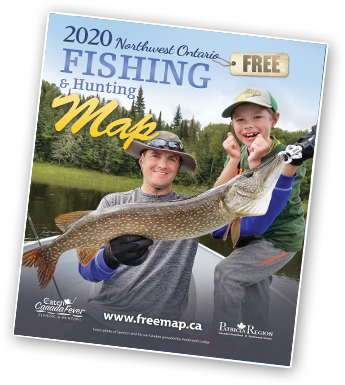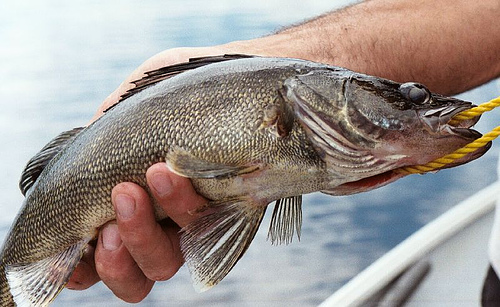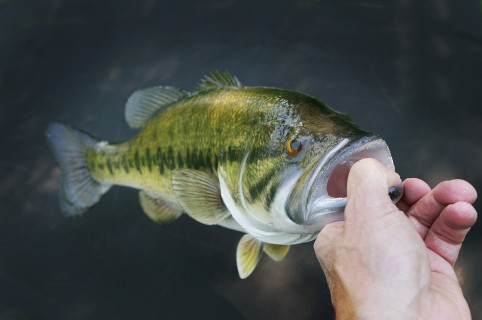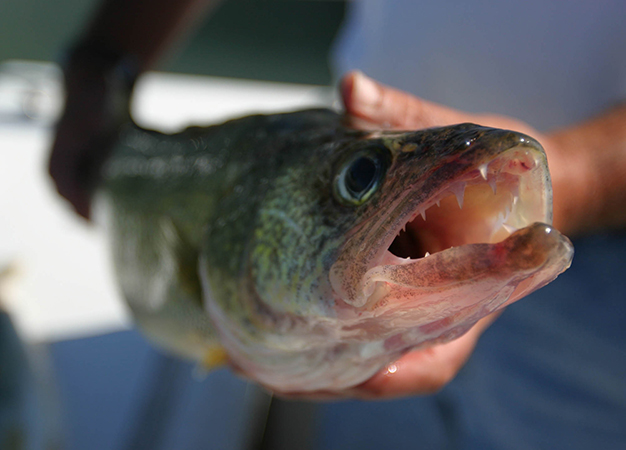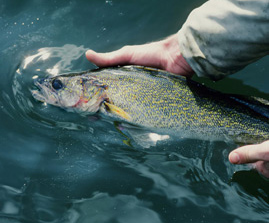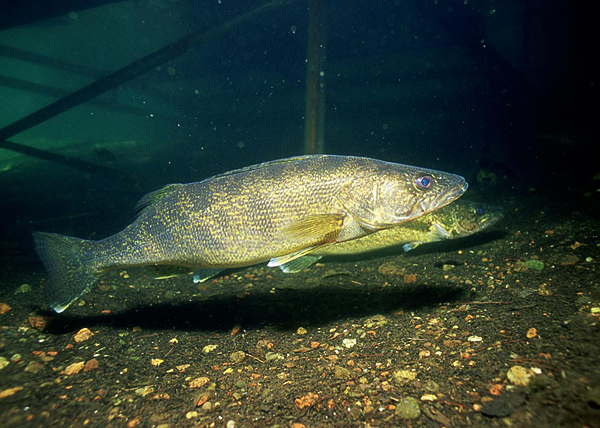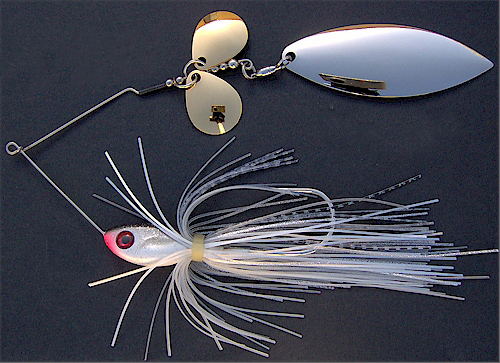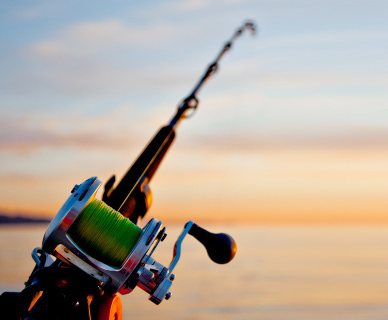1. Bass Become Dormant in Cold Water
With the fall season rapidly approaching, anglers will undoubtedly hear stories about how largemouth and small-mouth bass fishing will become quite bountiful. Most people think this has to do with bass stocking up for the winter, when in fact this only plays a part. Altered prey movements also play a role in small and large mouth bass beginning to feed.
 As bass are poikilothermic animals (blood same temperature as environment), the bass’ metabolic systems adjust to temperature changes to maintain life in the ecosystems they evolved in. Members of the sunfish family undergo physiological in their chemical balances as well as the size of their heart, this helps prepare them for the cold. Relative movement of bass declines and digestion slows, but bass bite well in northern waters as the lakes approach freezing point.
As bass are poikilothermic animals (blood same temperature as environment), the bass’ metabolic systems adjust to temperature changes to maintain life in the ecosystems they evolved in. Members of the sunfish family undergo physiological in their chemical balances as well as the size of their heart, this helps prepare them for the cold. Relative movement of bass declines and digestion slows, but bass bite well in northern waters as the lakes approach freezing point.
Largemouth bass tend to strike lures jigged below a hole in the ice and eat large suckers as well as shiners set on tip-ups. In the North east, many of the largest bass come from the ice each year.
Very few anglers target bass when lakes freeze over, and from a conservation stand point that’s a very good thing. Recently, some anglers have sought to remove catch and release law placed on local lakes during the winter. They argued that it was the best time to catch bass!
Physiological models suggest that at 40F bass need to consume only one third of the nutrition needed if the ambient temperature was 70F. Bait fish populations are also quite low during winter months, but largemouth and small-mouth bass still eat. In some systems, rivers in particularly, bass tend to be sedentary during winter, mostly due to lack of habitats. However, in most lakes and reservoirs, cameras placed underwater show both largemouth and small-mouth bass cruising along both shallow and deep, often approaching the camera for a better look.
2. Bass Strike Red Hooks Because They Resemble Blood
Lure manufactures have rushed to capitalize on this latest gimmick by offering lures with red hooks, red sinkers/blades, red line, even red reel spools! It’s said that the red coloring can attract extra bites by simulating the blood of a bait fish, it’s gills or perhaps even a crawfish.
Studies conducted on bass vision indicate the fish and easily detect the red coloring and can even discriminate among the shades. However, none of this research shows whether a bass is more likely to strike a red presentation. While anglers tend to reason, blood is red, bleeding bait fish are vulnerable to attack, so fish should therefore attack objects that are red; bass don’t think like that. They lack the neurological processes to come to any conclusion.
3. A Bass is a Bass…
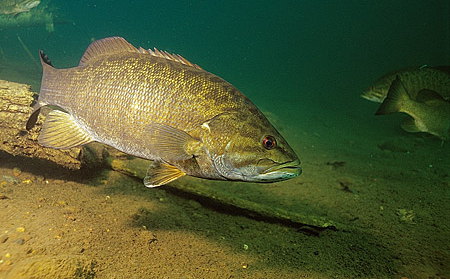
While most experienced anglers recognize the differences in behavior, habitat, and prey choice between largemouth and small-mouth bass, many still adhere to the adage that a largemouth bass will behave similarly in any habitat you find them.
While this phrase may boost an angler’s confidence when fishing new bodies of water, it is biologically groundless. Largemouth bass is considered a single species divided into 2 sub species; Northern and Florida largemouth. But further studies have shown variations in the DNA of largemouth bass, even from fish located in other bodies of water in the same province. And differences in diet, water clarity, and coverage also play a role in the different behavior of largemouth bass.
In some, top-water lures work all summer, while while the zero in other lakes. Certain occasions, nighttime fishing is king in some places, and others a complete waste of time. Lure preference can be pronounced as well, feeding and spawning behavior can also vary in largemouth bass.
4. Modern Live-wells Make Fish Care Easy
Too many anglers simply put their catch in a live-well, turn the switch to auto, and forget about them until weight-in time. While that amount of aeration on a modest catch in cool waters, limits of bass are oxygen deprived in waters +80F. Anglers need to take measures to improve conditions: run aerators constantly to add fresh water, and ice to lower the temperature to 5F-8F, or you can also add pure oxygen into the well. While today’s boats are longer and heavier, many models have not increased the size of live-wells. However, some companies need to be commended for taking fish care seriously, sacrificing a bit of storage for aeration systems that work.
Deficiencies in live-well design and angler behavior were evident in recent tournaments where bass mortality rates were high, both immediate and delayed mortality rates were abnormally high. TV coverage of tournaments show most poor anglers tossing their first fish of the day into dry live-wells only then turning them on. This is incredibly bad handling technique, and less experienced anglers watching could copy them.
5. You need a Big, Fast Boat to Fish Efficiently
Some boat manufacturers and the pro anglers they sponsor seem to imply that the craft makes the angler. Rather it’s the angler’s techniques that make the boat choice that prevails. As in days gone by, some of the best bass fishermen use small underpowered boats.
Small boats are suited for small waters, here the giant bass dwell. Full sized boats can’t get into the shallows and have difficulty moving through shallows or deep vegetation. When they do, their commotion usually spooks the lunker fish.
Even on large waters, small, slow boats force anglers to slow down and concentrate on the fish and its environment. Big, fast bass boats are defiantly comfortable and cool looking, allowing us to haul hundreds of bass baits few of which ever get used.
6. Tournaments Harm Bass Populations
Despite booming bass fisheries in recent decades, this myth refuses to die. Anglers and managers opposed to tournaments, for whichever reason, propagate the idea that excessive fishing hurts mortality rates. You only need to check the waters fished incessantly by tournament competitors for decades. Catches on these lakes today have been as good as they ever have been.
Some studies have shown that tournament angling has accounted for only 1 to 16% of mortality of the largemouth bass population, whereas regular catch and release largemouth fishing accounted or 2 to 17% and angler harvest accounted for 16 to 38%.
Fishing pressure undoubtedly makes bass fishing harder, but blame does not rest solely on the competitive anglers’ shoulders.
7. Bass abandon area Treated with Herbicides
While most anglers are generally opposed to herbicide treatments, in some cases they may be necessary due to excessive plant growth which limits bass feeding and cuts the abundance of prey, like shad, down.
Scientific evidence shows that bass aren’t negatively affected if herbicides are applied properly. Recently, studies have been conducted on the reaction of bass to plant reduction. The treatment of herbicides on these plants didn’t change bass behavior in the short term, but when the plants began to dwindle, bass moved into deeper water and switched habitats from hydrilla flats to standing timber. Removal of hydrilla in smaller, shallower coves in other creek arms had contrasting results. Instead of moving deeper, some bass moved shallower into floating and emergent vegetation that represented the best habitat once the hydrilla dwindled. In both cases, however, changes in fishing strategy would be needed in order to maintain catch rates.
Vegetation removal should always be looked at as a last resort by lake managers, but select careful treatment shouldn’t harm bass fisheries.
8. Big Baits Catch Big Bass
While this is technically true, there is more to this that meets the eye. Largemouth bass are an incredibly appropriate named fish. Endowed with a gargantuan maw, a largemouth bass will eat anything they can fit inside their mouths: bats, rats, snakes, small birds, young squirrels, clams and countless other invertebrates and fish.
Scientists have calculated the size of prey largemouth bass can eat. Largemouth bass can eat prey shaped like shad or trout as big as as half their own length. Prey with wider bodies are generally eaten if they are smaller in length.
The key to catching big bass with big baits is to place them in vulnerable positions where big fish live and hunt. Long, main lake points, interfaces of deep water and offshore vertical structures, and deep weed lines are a few examples.
Studies on bass have shown that bass even attack prey much larger than what is safe for them to eat, often choking on their prey in the process. At the other end of the spectrum, bass will also attack and eat items nearly as small as microscopic water fleas, even sustaining themselves for months when larger prey are scarce.
9. Catching Nesting Bass is like Picking Cherries
Some anglers look down on sight-fishing for bedding bass as unsporting and unethical, in that it takes advantage of bass at their most vulnerable moments. Despite these angler’s prejudices, it is a more “feast-or-famine” approach, and in some areas part of the angling tradition.
Sight-fishing is an art and a skilled angler can read the behavior patterns of a particular bass and determine the likelihood of its capture. It takes years of practice, patience, plus good observation skills and gamesmanship to do it properly. On the other hand bass on lightly fished waters are far more likely to swim off a bed to eat just about anything tossed their way.
10. Stocking Florida Bass Improves Lunker Catches
When stocking Florida bass into semi-tropical environments such as Texas or California, Florida bass tend to increase the size of the bass located on the lake. Because these bass have evolved more suited for the warmer climate, when they are introduced into cool water (below about 50F) it limits their spawning, slows growth below that of the native species and causes high mortality.
Since Florida bass will frequently spawn with the native bass, you end up mixing in these “genetic weaknesses”.


